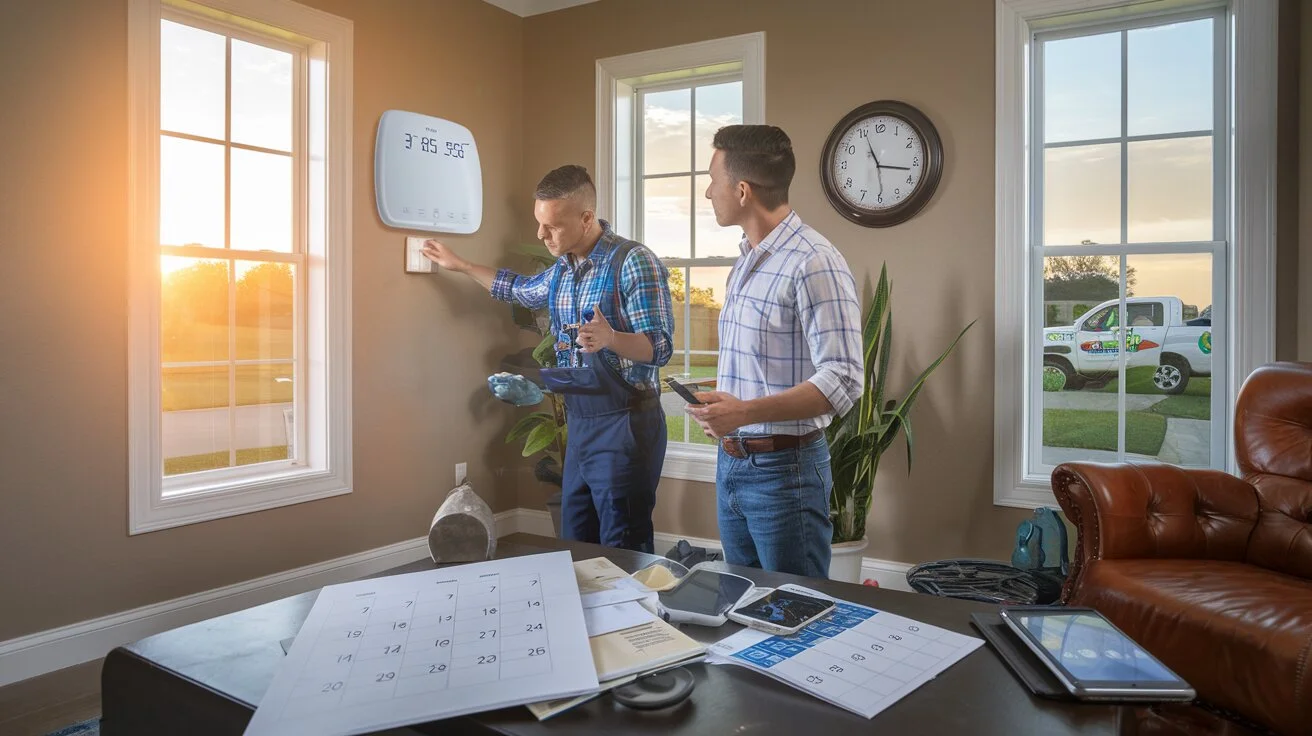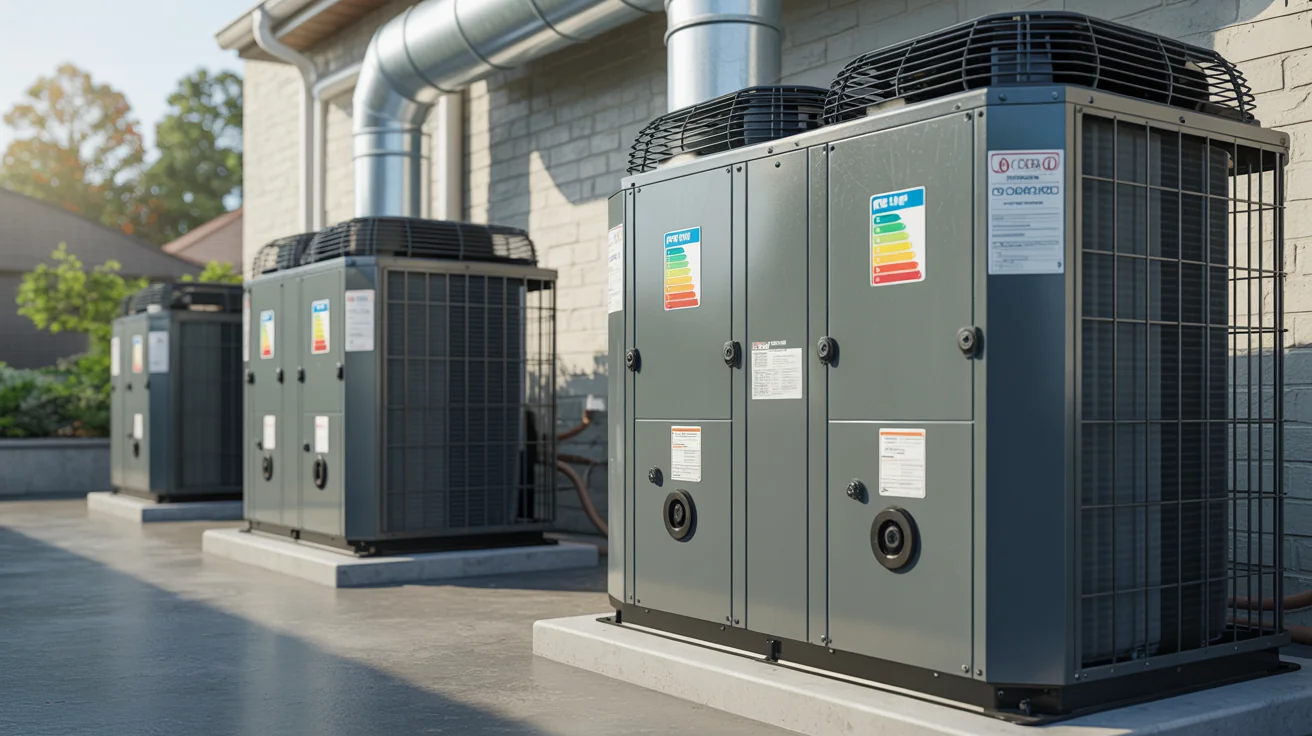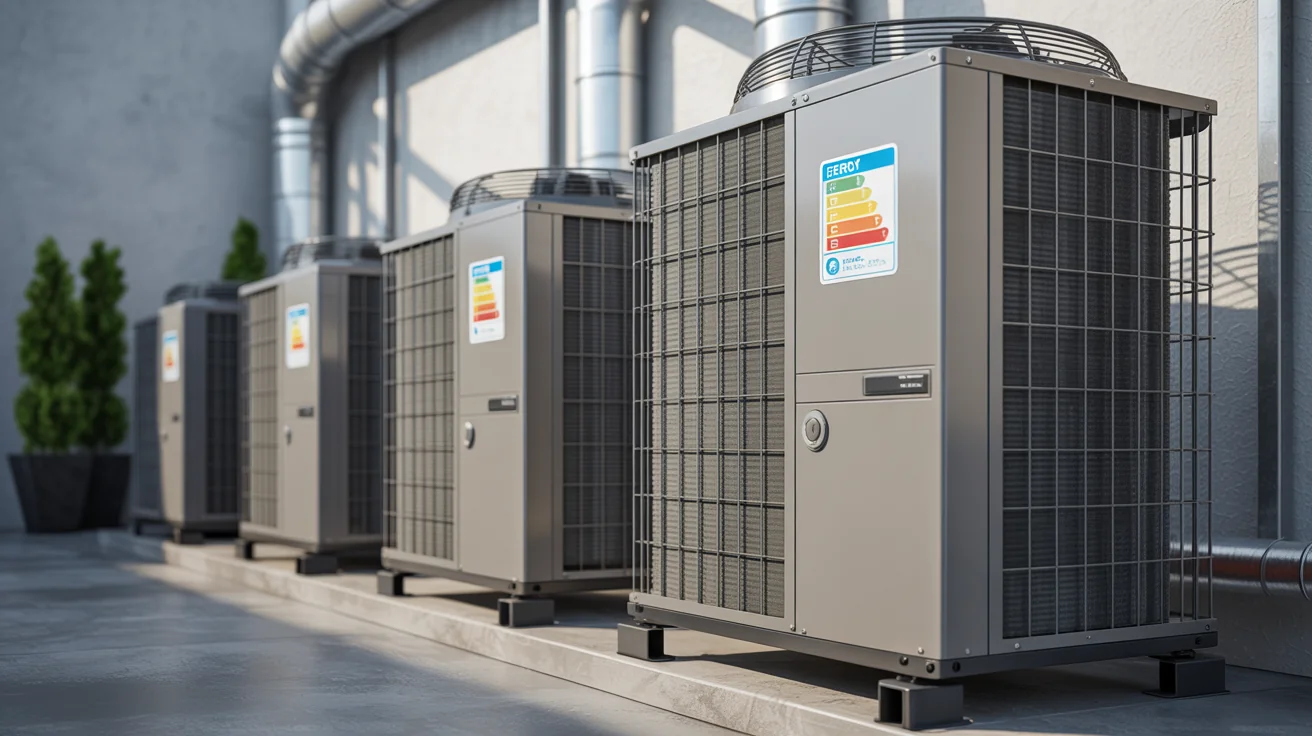Texas Summer HVAC Timing Strategies
Master the art of HVAC scheduling in North Texas heat. Learn when to service, repair, and run your AC to avoid peak pricing and emergency calls during 100°F+ days.

- The $847 Mistake I Made on a Tuesday at 2 PM
- Why Tuesday at 2 PM Costs Triple (And Monday at 7 AM Doesn’t)
- The Thermostat Schedule That Survives 100-Degree Weeks
- Service Scheduling: The Calendar Nobody Follows (But Should)
- Peak vs Off-Peak: The Secret Every Commercial Customer Knows
- When Your AC Will Probably Break (And When to Call)
- Emergency Prevention: The Schedule That Keeps You Off Our Emergency List
- My Failed October Strategy (And Why It Cost Me)
+ 5 more sections below...
- The $847 Mistake I Made on a Tuesday at 2 PM
- Why Tuesday at 2 PM Costs Triple (And Monday at 7 AM Doesn’t)
- The Thermostat Schedule That Survives 100-Degree Weeks
- Service Scheduling: The Calendar Nobody Follows (But Should)
- Peak vs Off-Peak: The Secret Every Commercial Customer Knows
- When Your AC Will Probably Break (And When to Call)
- Emergency Prevention: The Schedule That Keeps You Off Our Emergency List
- My Failed October Strategy (And Why It Cost Me)
+ 5 more sections below...
Schedule HVAC service Monday mornings before 10 AM for standard rates ($125 base), and avoid Tuesday-Thursday afternoons (2-6 PM) when emergency rates can triple costs to $375+. Pre-cool your home to 72-73°F from 4-8 AM during off-peak electricity rates (8.2¢/kWh), then allow drift to 78-79°F during peak hours (2-7 PM, 24.3¢/kWh) to save $190+ over 90 summer days. Book maintenance in March (15th-31st is the golden window) when schedules are open and rates are standard; waiting until June-August means 5-10 day waits and summer surcharges.
The $847 Mistake I Made on a Tuesday at 2 PM
Three summers ago, my own AC died. Tuesday, July 18th, 2:17 PM to be exact. Temperature outside: 103°F. Temperature inside my house: climbing past 85°F.
I knew better. I’d been telling customers for years about peak demand pricing. About how Tuesday through Thursday afternoons in summer are the worst possible time to need emergency HVAC service. But there I was, calling my buddy Mike at another company, begging him to squeeze me in.
The capacitor that failed? $45 part. The emergency service call at peak hours with same-day response? $847. If I’d caught it during my spring check (which I skipped) or even called on a Monday morning, it would’ve been $185 total.
Mike laughed at me the entire repair. “You literally wrote the scheduling guidelines for our company,” he said, wiping sweat from his forehead. “And you scheduled yourself into the most expensive time slot possible.”
That’s when I really understood - knowing the right schedule and actually following it are two different animals. Especially when you’re dealing with North Texas heat that hits 100°F for 30+ days straight.
Why Tuesday at 2 PM Costs Triple (And Monday at 7 AM Doesn’t)
Here’s what most Frisco and Plano homeowners don’t realize about HVAC scheduling. The industry runs on a predictable weekly cycle, especially from May through September.
Monday mornings before 10 AM? That’s the sweet spot. Technicians are fresh from the weekend, parts trucks are fully stocked, and nobody’s hit their overtime hours yet. Standard rates apply. First-come, first-served actually means something.
Tuesday through Thursday, 12 PM to 6 PM? You’ve entered the danger zone. Every AC in North Texas is running full blast. Grid demand peaks. ERCOT might issue conservation notices. Our phones at Jupitair ring nonstop - sometimes 200+ calls in three hours. Emergency rates kick in automatically. Parts start running low. Junior techs are all booked, so you’re paying for senior technician overtime.
Friday afternoon seems like it would be expensive, but it’s actually not terrible. Half the commercial buildings shut down their systems for the weekend. Demand drops. Though if you need parts that aren’t on the truck, you’re waiting until Monday.
Weekends? Saturday morning before 11 AM isn’t bad - maybe 25% markup. Saturday afternoon through Sunday evening? You’re looking at emergency rates plus weekend charges. Could be double or triple standard pricing.
Want real numbers? Last August in Plano:
- Monday 8 AM service call: $125 base rate
- Wednesday 3 PM service call: $275 base rate
- Saturday 4 PM service call: $325 base rate
- Sunday 6 PM service call: $375 base rate
Same neighborhood. Same type of call. Different timing, different bill.
The Thermostat Schedule That Survives 100-Degree Weeks
Forget what you’ve read about setting it to 78°F and leaving it alone. That advice wasn’t written for Texas. When it’s 105°F outside for eight hours straight, your system needs a smarter strategy.
I’ve been in thousands of North Texas homes. The ones that make it through summer without emergency calls all do something similar. They pre-cool.
4 AM to 8 AM: Set to 72-73°F. Your AC runs during the coolest part of the day, when it’s most efficient. The house becomes a thermal battery.
8 AM to 3 PM: Let it drift up to 76-77°F. The pre-cooled mass of your home fights the heat. Your AC cycles normally instead of running constantly.
3 PM to 7 PM: This is grid peak time. If you’re on a time-of-use plan (check your electric bill - 30% of Frisco is and doesn’t know it), electricity costs 3x more. Let the house hit 78-79°F if you can stand it. Every degree saves 6-8% on runtime.
7 PM to 10 PM: Drop back to 75-76°F as evening rates kick in and outdoor temps fall.
10 PM to 4 AM: Sleep setting at 74-75°F. Your system gets its longest break here.
One customer in West Plano showed me his Nest data. Same schedule reduced his July bill by $127 compared to keeping it at constant 76°F. His system ran 31% less during peak heat hours. That’s 31% less wear during the most stressful time.
But here’s what nobody mentions - humidity throws this all off. When those afternoon thunderstorms roll through and humidity spikes to 70%, your AC has to work twice as hard to hit the same temperature. On those days, I tell people to ignore the schedule and just survive.
Service Scheduling: The Calendar Nobody Follows (But Should)
March 15-31: This is the golden window. Weather’s mild, schedules are open, and you’ll catch problems before heat stress magnifies them. We can usually schedule next-day service. Parts are in stock. Nobody’s stressed. Your tech has time to actually explain things.
April: Still good, but filling up fast. Smart people are booking. You might wait 3-4 days for non-emergency service.
May 1-15: Last chance for standard rates. After May 15th, we’re in emergency mode through September. Every company in North Texas is slammed.
May 16 - September 15: Unless it’s an emergency, you’re waiting 5-10 days minimum. And paying summer rates. I’ve seen people wait two weeks for a new installation in July.
September 16-30: The forgotten opportunity. Systems that survived summer need love. But everyone ignores them until heating season. This is when I service my own system. Techs are available, weather’s cooling, and you can fix summer damage before it becomes winter failure.
October - November: Heating prep season. Another good window, but different focus.
December - February: Heating season emergency rates apply during cold snaps.
The cruel irony? The people who need service most in July are the ones who skipped service in March. Every. Single. Year.
Peak vs Off-Peak: The Secret Every Commercial Customer Knows
Large commercial buildings in Addison have energy managers who obsess over this stuff. They know that running their 50-ton rooftop units at 2 PM in August costs them $500/hour. So they pre-cool at night and coast through peaks.
Your 4-ton residential system isn’t that different. It just seems like small potatoes until you do the math.
Standard TXU residential rate: 12.8¢ per kWh Peak summer rate (2-7 PM): 24.3¢ per kWh Super off-peak (10 PM - 6 AM): 8.2¢ per kWh
Your AC pulls about 3.5 kW when running. During a typical 105°F day, it might run 75% of the time from 2-7 PM trying to maintain 76°F. That’s:
3.5 kW × 5 hours × 0.75 × $0.243 = $3.19 per day
Same cooling load shifted to night pre-cooling:
3.5 kW × 5 hours × 0.75 × $0.082 = $1.08 per day
Multiply by 90 summer days. That’s $190 difference just from timing. Not changing usage, just shifting when you use it.
But here’s what the calculators don’t tell you - peak demand charges. If you have smart meter data showing heavy usage during peak times, some providers hit you with demand charges. One spike afternoon in July can add $50 to your bill for the entire month.
When Your AC Will Probably Break (And When to Call)
After 17 years of service calls, I can predict failures like clockwork:
Day 1-3 of heat wave: Weak capacitors fail. Old contractors burn out. These are the lucky ones - parts are still available.
Day 5-7: Compressor failures start. Motors running hot for days begin seizing. This is when the phones explode.
Day 8-12: The avalanche. Everything that was hanging on gives up. We’re working 14-hour days. Parts are on allocation. Wholesale houses limit purchases. If you need a common Goodman capacitor on day 10 of a heat wave? Good luck.
Day 14+: Only the strong survive. If your system makes it two weeks of 100°F+, it’ll probably make it through summer.
The best time to call? The moment you notice anything weird. That slight grinding noise at startup? The circuit breaker that tripped once but reset fine? The room that’s suddenly not cooling like others?
Don’t wait for complete failure. Call at 7 AM, not 3 PM. Call on Monday, not Thursday. Call the week before the heat wave, not during it.
Last June, a Frisco customer called about a “weird sound” on a Monday morning. We found a failing motor bearing, replaced the motor for $480. His neighbor heard the same sound, waited until it failed completely the next Thursday afternoon. Same repair, but emergency rates plus overtime: $1,100.
Emergency Prevention: The Schedule That Keeps You Off Our Emergency List
Want to know who never calls us for emergencies? The same 200 or so customers who follow this schedule religiously:
February: Check and order filters for the entire year. Buy in bulk, save 30%.
March 15-20: Spring maintenance. Clean coils, check refrigerant, test capacitors, measure amp draws. Call (940) 390-5676 to schedule - we block time specifically for our maintenance plan members.
May 1: Replace filter. Test thermostat scheduling. Update time-of-use settings if you have them.
June 1: Replace filter. Check condensate drain. Look for ice on the indoor coil.
July 1: Replace filter. Rinse outdoor unit (turn power off first). Check for bent fins.
July 15: Mid-summer check. Listen for new sounds. Check air temperature from vents (should be 15-20°F cooler than room temp).
August 1: Replace filter. This is the crucial one - August is typically the hottest month.
September 1: Replace filter. Check for summer damage.
October 15: Fall maintenance. Fix whatever summer broke.
Sounds like overkill? The customers who follow this haven’t had emergency calls in 5+ years. The ones who don’t? We see them every July, usually at 4 PM on the hottest day.
My Failed October Strategy (And Why It Cost Me)
Two years ago I tried to outsmart the system. October, mild weather, perfect time for my own system replacement, right?
Wrong.
October 2022, everyone else had the same idea. Every contractor was booked three weeks out with replacements. Then November hit with an early freeze. My planned October installation became an emergency November installation at emergency rates.
The heat pump I wanted? Backordered. The crew I wanted? Doing emergency heating repairs. What should have been a calm $6,500 replacement became a rushed $8,200 emergency job with a second-choice system.
The real kicker? If I’d scheduled in September when everyone was still recovering from summer, or waited until December when demand dropped again, I’d have saved $1,700 and gotten exactly what I wanted.
Even HVAC contractors get the timing wrong sometimes.
The Truth About 24/7 Service
We advertise 24/7 emergency service. So does everyone else. Here’s what that actually means:
Monday-Friday, 7 AM - 6 PM: Full staff, all trucks rolling, parts readily available. This is real service.
Evenings 6 PM - 10 PM: Half staff, limited trucks, common parts only. You’ll pay after-hours rates.
Nights 10 PM - 7 AM: One on-call tech, one truck, emergency-only parts. Triple rates minimum. Honestly, unless your house is over 90°F or under 50°F, wait until morning.
Weekends: Reduced staff, emergency rates, limited parts. Saturday morning is better than Sunday evening.
July 4th, Thanksgiving, Christmas? We’re answering phones, but you better be dying of heat stroke. One tech, one truck, and rates that’ll make you consider a hotel instead.
Real talk - if it’s 2 AM and your AC dies but the house is still 80°F or below, open windows and wait until 7 AM to call. You’ll save $200+ and get better service with more options.
What Grid Stress Really Means for Your AC
ERCOT conservation notices aren’t suggestions. When the Texas grid approaches capacity, things get real fast.
Stage 1: Conservation requested. Your smart thermostat might adjust automatically if you’re enrolled in demand response programs.
Stage 2: Emergency operations. Large commercial customers get curtailment orders.
Stage 3: Rolling blackouts. Your AC doesn’t work without power.
But before any of that happens, voltage drops. Instead of 240V, your system might get 220V during peak demand. Compressors work harder, pull more amps, run hotter. Components fail faster.
I’ve tracked service calls against ERCOT warnings. On days with conservation notices, we see 40% more capacitor failures. The grid stress literally kills AC components.
Your defense? Don’t run your system hard during conservation warnings. Let the house get warmer. Every degree helps the grid and your equipment.
The Year-Round Calendar That Actually Works
After that $847 Tuesday disaster, I built myself a calendar. Not a maintenance checklist - a timing strategy. Here’s what’s taped to my garage wall:
January: Book March maintenance. Order filters for the year.
February: Clean garage, make room for portable AC unit (yes, I have backup now).
March 15-20: Spring maintenance window. Non-negotiable.
April: Monitor 10-day forecast. Pre-cool house before first 90°F day.
May: Switch to summer thermostat schedule. Sign up for grid alerts.
June-August: Survival mode. Monthly filter changes. Weekly coil checks.
September: Breathe. Assess damage. Book October maintenance.
October: Fall service. Fix what broke. Consider replacements.
November: Winterize outdoor unit. Check heating operation.
December: Update thermostat for winter schedule. Forget about HVAC until March.
It’s not perfect. That surprise May freeze in 2021 threw everything off. But it beats calling for emergency service on peak days.
Why Nobody Tells You This Stuff
Most HVAC companies won’t share scheduling strategy. Why would they? Emergency calls at peak rates pay the bills. That Wednesday afternoon emergency at $375/hour keeps the lights on.
But here’s the thing - I’d rather have 500 customers who never need emergency service than 50 who call panicking every July. Stable customers who plan ahead are better for everyone. Less stress, better service, fair prices.
Call us at (940) 390-5676 for maintenance scheduling. Best times to reach us? Monday-Friday, 7-10 AM. Worst times? Tuesday-Thursday, 2-5 PM when everyone’s AC is dying.
We’ll put you on the schedule for optimal timing. March for spring service, October for fall. Skip the emergency calls, avoid peak pricing, keep your system running.
Because the difference between a $200 planned service and a $800 emergency call isn’t the work we do.
It’s when you schedule it.
Sources & References
The scheduling recommendations, peak demand data, and efficiency timing guidelines in this article are based on the following authoritative sources:
- ERCOT Texas Grid - Peak demand periods and Texas electricity pricing patterns
- U.S. Department of Energy - Energy Saver - Time-of-use energy optimization
- PUC of Texas - Texas electricity rate structures and peak pricing
- ENERGY STAR Smart Thermostats - Optimal scheduling for efficiency
- EIA Texas Electricity - Texas energy costs and consumption patterns
Last Updated: December 2025
Need Professional HVAC Service?
Our certified technicians are ready to help with any HVAC needs in North Texas



